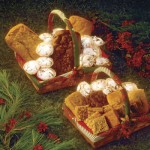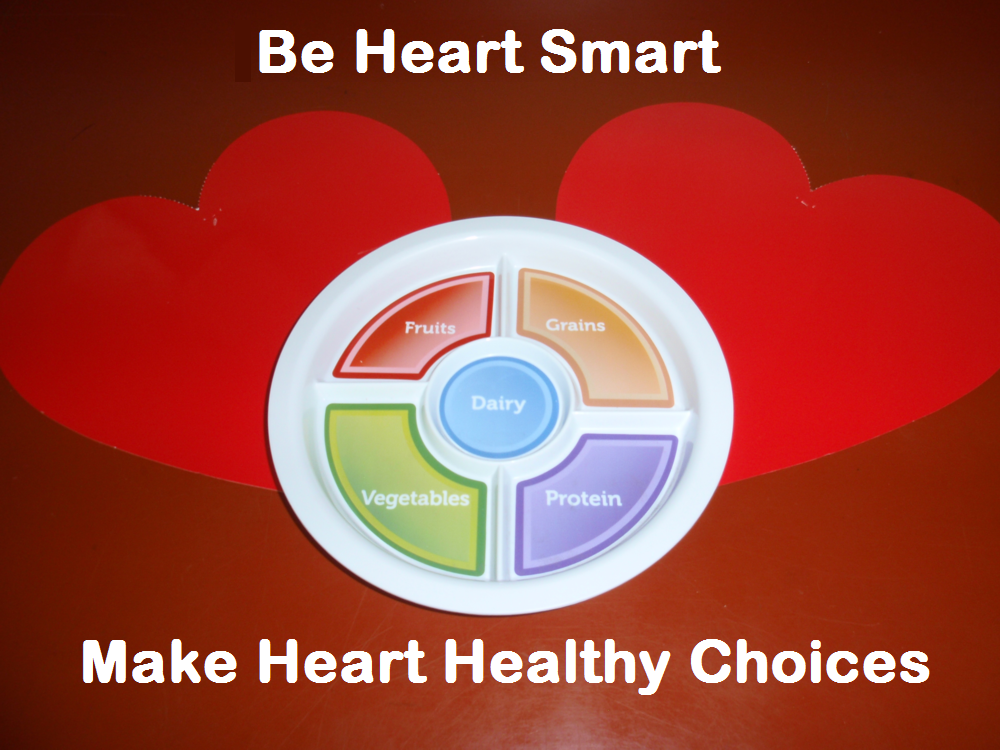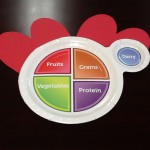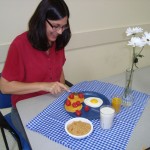by Dorothy C. Lee | Mar 17, 2015

Egg food safety at Easter time
Easter activities often include eggs. During the Spring holiday, eggs are both a decorative craft object and an inspiration for springtime fun and games, and, oh by the way, they are fun to eat too.
Eggs and egg products can be an important part of your diet. Although there are many myths and misconceptions about how to safely cook and handle eggs, all it really requires is care. By following a few simple guidelines, eggs and egg products can play a valuable and economic role in your holiday menu.
To avoid the possibility of foodborne illness, fresh eggs must be handled carefully. Even eggs with clean, uncracked shells may occasionally contain bacteria called Salmonella that can cause an intestinal infection. The U.S. Food and Drug Administration (FDA) is working to prevent this problem in eggs by requiring that egg producers obtain chicks that are certified Samonella-free, that the hens are kept in houses that are free from rodents and other Salmonella carrying sources, that the houses are continually tested for Salmonella, and that the eggs are stored at temperatures that retard Salmonella growth. Consumers play a large role in this prevention strategy. In fact, the most effective way to prevent egg-related illness is by knowing how to buy, store, handle and cook eggs—or foods that contain them—safely.
Following these instructions is important for everyone, but especially for those most vulnerable to foodborne disease—children, the elderly, and persons with weakened immune systems.
Buy Right
- Buy eggs only if sold from a refrigerator or refrigerated case.
- Open the carton and make sure that the eggs are clean and the shells are not cracked.
- Refrigerate promptly.
- Store eggs in their original carton and use them within 4 to 5 weeks.
Keep Everything Clean
Before preparing any food, remember that cleanliness is key!
- Wash hands, utensils, equipment, and kitchen work surfaces with hot, soapy water before and after they come in contact with eggs and egg-containing foods.
Cook Thoroughly
Cook eggs thoroughly. Thorough cooking is perhaps the most important step in making sure eggs are safe.
- Cook eggs until both the yolk and the white are firm. Scrambled eggs should not be runny.
Serve Safely
Bacteria can multiply in temperatures from 40°F (5°C) to 140°F (60°C), so it’s very important to serve foods safely.
- Serve cooked eggs and egg-containing foods immediately after cooking.
- For buffet-style serving, hot egg dishes should be kept hot, and cold egg dishes kept cold.
- Eggs and egg dishes, such as quiches or soufflés, may be refrigerated for serving later but should be thoroughly reheated to 165°F (74°C) before serving.
Chill Properly
- Cooked eggs, including hard-boiled eggs, and egg-containing foods should not sit out for more than 2 hours. Within 2 hours, either reheat or refrigerate.
- Use hard-cooked eggs (in the shell or peeled) within one week after cooking
On the Road
- Cooked eggs for a picnic should be packed in an insulated cooler with enough ice or frozen gel packs to keep them cold.
- Don’t put the cooler in a hot car—carry it in the air-conditioned passenger compartment of the car.
Safe Handling Instructions
To prevent illness from bacteria: keep eggs refrigerated, cook eggs until yolks are firm, and cook foods containing eggs thoroughly.
Hard-cooked Easter eggs can help stretch your food dollars. Packed with high-quality protein, vitamins, and minerals, they add good nutrition when included in casseroles, sandwiches, and salads. Remember, hard-cooked eggs should be refrigerated as much as possible between cooking, decorating, and the hunt or the display.
However they are used, eggs are delicious, nutritious, and economical.
For further information, contact
Dorothy C. Lee, C.F.C.S.
Family & Consumer Sciences Agent
UF IFAS Extension Escambia County
(850) 475-5230
dclee@ufl.edu
by Dorothy C. Lee | Dec 9, 2014
 Christmas is a joyous season. It’s a time to remember friends and neighbors with small tokens of your love and appreciation.
Christmas is a joyous season. It’s a time to remember friends and neighbors with small tokens of your love and appreciation.
Every holiday season is magical, but it also can be a perplexing time. How do you choose gifts for your friends and loved ones that are unique and sure to be cherished?
Remember Christmas when you were young? How the simplest projects—stringing lights, hanging icicles, baking cookies, gathering pine cones, or making ornaments for the tree—filled the season with fun and excitement. Bring back that special magic with your own holiday projects. These holiday projects are gifts from the heart.
If you have spent many hours in past seasons trying to find the answer to the perplexing question of what to give, perhaps this year you can find the answer in your own kitchen. Flavorful gifts you can create in an evening or two at home might be just the solution. Most of us like to follow the pleasure of cooking with sharing the scrumptious results. So this holiday season, prepare some delicious food gifts for friends and relatives.
A jar of homemade jam or jelly conveys a welcome sign of friendship to neighbors or co-workers. Besides being fun to make and share, oven-baked goods, snacks, and other savory items are attractive and often cost less than those that are store-bought. This is a gift that comes from the heart without breaking the bank. For a holiday touch, add a pretty ribbon or a note from a square of wrapping paper.
Fresh from the oven, a batch of pumpkin muffins or a loaf of whole grain bread will send warm holiday greetings to friends. Decorated with raisins and nuts, gingerbread men will appeal to anyone who fancies the spicy flavors of cinnamon, ginger, and cloves. When invited to festive dinners, take along a basket filled with your own gift assortment of cookies packaged in inexpensive containers with recipes and a personalized message included. You will find these gifts easy to transport and the hostess is sure to appreciate the gesture.
Another gourmet goodies idea to consider is sharing a decorative jar or tin packed with flavorful popcorn or a nutritious trail mix. Top a decorative tray with herbed cheese rounds. Herbs offer a delicious alternative to salt. Herb seasoning mixes can be packaged in a decorative glass jar or bottle and tied with festive ribbon. Be sure to attach a label with instructions for serving and a recipe for making more.
When making these gourmet goodies, you might want to prepare an additional batch so you will have a last-minute gift on hand. The additional jar of jam or jelly can make a special gift for unexpected visitors. These gifts are seen as thoughtful and well-prepared when, in reality, they are a last-minute thought.
Start early and make lots of homemade goodies for the holidays. By planning your kitchen gifts early, you can shop for ingredients on sale, save decorative containers, and make food items in advance. So get a head start on holiday gifts from your kitchen. Happy Holidays!
by Dorothy C. Lee | Apr 14, 2014

Photo credit: Dorothy C. Lee
Spring is officially upon us. There are few rites of Spring more familiar than the annual Spring Cleaning. It is easier and healthier to live in a clean, well-organized home. Spring Cleaning doesn’t have to be synonymous with drudgery, though.
The key to cleaning is being organized and familiar with the uses of different cleaning products. Today’s cleaning methods and equipment make it more efficient and economical to clean. Be an informed consumer when selecting household cleaning supplies. Selecting a few all-purpose cleaners is more economical and requires less storage space.
Make it easy: Get organized. Gather cleaning supplies. Select a few all-purpose cleaners. Put all of your cleaning supplies, brushes, gloves, rags, etc. into one basket and take it with you as you move from room to room.
Clean with ease. Here are some tips that can help you:
- Clean as you go. For example, make your bed as you get out of it.
- Perform preventive measures to avoid big cleaning jobs later. For example, change filters in heating and cooling equipment regularly.
- Plan ahead. Make a list and check off items as you complete the chore. Establish a flexible cleaning schedule.
- Make sure to follow manufacturers’ directions for use and care of items.
- Incentivize by establishing a goal and rewarding yourself when you’ve accomplished it.
- Get in a cleaning mindset. Put on an exercise DVD and think of cleaning as a workout instead of a chore, or put on music you like to move to and let it energize you.
Consider making your own household cleaning supplies…Granny did! Try baking soda, vinegar, and ammonia for cleaning. These old-fashioned cleaners still work today. Making your own cleaners can cost less and be environmentally safe.
Safety considerations should always be followed when making household cleaning supplies. Never mix chlorine bleach with any other cleaning agents, especially ammonia or vinegar. The combination can create toxic fumes. Do not store cleaning supplies in containers that once held food or beverages – this can lead to mistaken identity and accidental poisoning. Clearly label each container. Store all cleaning supplies out of reach of children. Mix cleaning solutions in a well-ventilated area and clean up after using toxic substances. Store containers tightly closed.
Many household cleaners can be made from inexpensive household ingredients. Following are a few DIY cleaning solutions you can prepare yourself:
Multi-purpose Cleaner
1/2 cup ammonia
1 cup baking soda
2 cups warm water
Mix ingredients in a one-gallon container until baking soda is dissolved, and then add enough water to fill the gallon container. Use ½ cup of mixture in a bucket of water to clean floors, walls, woodwork.
Window Cleaner
Mix together 2 tablespoons vinegar and 1 quart water in a spray container. Spray windows and use crumpled newspaper, if desired, to shine windows.
Mildew Cleaner
3/4 cup chlorine bleach
1 gallon water
Mix and put into spray container. Apply to mildewed area; let stand for five minutes; rinse with water.
Disinfecting Solution
3/4 cup chlorine bleach
1 tablespoon liquid soap
1 gallon water
Mix ingredients together. Wipe surface and let stand for two minutes. Rinse and wipe dry or air dry.
Aluminum Cleaner
1 tablespoon vinegar to 1 quart water or
2 teaspoons cream of tartar to 1 quart water
Add solution to pan and bring to a boil. Boil until discoloration disappears. Empty solution, let pan cool, and rinse.
Consider making your own cleaners before you buy. They cost less and are eco-friendly. Be an informed consumer and spring into cleaning!
For further information, visit the University of Florida/IFAS Solutions for Your Life website.
References:
EDIS publication FCS 3149 Hazardous Household Substances: Alternatives That are Relatively Free of Toxic Effects
“Eco-Friendly Alternatives to Commercial Cleaners and Other Household Products,” Environmental Media Services, www.ems.org
“Safe Substitutes at Home: Non-Toxic Household Products,” EnviroSense, www.epa.gov

by Dorothy C. Lee | Mar 3, 2014

Be Heart Smart – Make Heart-Healthy Choices
The Centers for Disease Control and Prevention estimate that about 600,000 people die of heart disease in the United States each year. Heart disease is the leading cause of death for both men and women in the United States.
Eating habits are something we acquire as we grow up. Over the years, family eating habits have changed drastically. There is less emphasis given to well-planned family meals. American food habits are leaning more toward meals eaten away from home, and more reliance on fast food, convenience foods, and high-sugar, high-salt snacks.
The food choices we make today are important to our nutritional well-being tomorrow. A diet low in saturated fat and cholesterol and high in fruits and vegetables and grain products that contain some type of dietary fiber may reduce the risk of heart disease.
Be Heart Smart. Make heart-healthy choices at every meal. Basic steps to a heart smart diet are simple and easy:
- Select whole grains and cereals
- Eat a wide variety of fruits and vegetables
- Limit sodium intake
- Use oil products made from unsaturated vegetable oils instead of saturated oils like coconut and palm kernel
- Select cooking methods that are lower-fat alternatives to frying, such as grilling, baking, broiling, or microwaving
- Choose lean meat, poultry, and fish
Your health is your most precious possession. A healthy diet is only one part of a heart-healthy lifestyle. Physical activity is another important component. The American Heart Association physical activity guidelines recommend some type of aerobic exercise daily, and walking, dancing, biking, swimming, or gardening are good examples. Be sure to consult your physician before starting any exercise program.
We are all concerned about maintaining good health. Developing good eating habits based on moderation and variety, plus physical activity, can help keep, and even improve, your health.
For more information, visit the University of Florida Solutions for Your Life website, http://www.SolutionsForYourLife.com.
Reference: http://www.heart.org
by Dorothy C. Lee | Aug 22, 2013

Fuel your brain with a healthy, balanced breakfast.
Waking up is hard enough to do, but it is especially difficult for people who are not “morning” people, who would like to avoid that time of day altogether, and who don’t generally want breakfast. Nevertheless, the sun is still going to rise, people still have to get up, and breakfast still is the most important meal of the day. Because traditional meals play a significant role in providing daily recommended levels of essential nutrients, nutritionists often cite breakfast as the day’s most important meal and as the foundation of healthy eating habits.
Despite these recommendations, millions of Americans, in the rush to get to work, school, and other activities, often skip breakfast, thinking there is not enough time to prepare and eat a good well-balanced morning meal. Studies show that eating habits developed during childhood have the potential to last a lifetime, and children who tend to omit breakfast will likely continue this dietary habit well into adulthood. Studies also have shown that eating breakfast is associated with improved strength and endurance throughout the day and a better attitude toward school or work.
The role of breakfast in helping children perform at peak levels in the classroom was first documented more than 45 years ago at the University of Iowa Medical College. Researchers found that children who skipped breakfast had trouble concentrating at school and often became inattentive, irritable, restless, and fatigued by late morning—all behaviors counterproductive to learning. The behaviors were linked to low blood sugar levels which had not been replenished by a morning meal.
Breakfast helps to replenish blood glucose levels, which is important since the brain itself has no reserves of glucose, its main energy source. Sustained mental activity requires a large turnover of brain glucose and its metabolic components. After a fast of eight or nine hours, refueling at breakfast will make you feel and perform better during the day.
Here are some quick tips to help you avoid the temptation to be a breakfast skipper:
- No time? Build a breakfast around foods that are ready-to-eat or take little preparation time. For example: fresh and canned fruits; milk; yogurt; cheese; cottage cheese; ready-to-eat cold cereals; fruit smoothies; and instant breakfast mixes.
- Take it to go. Try celery stuffed with a meat or cheese spread or peanut butter; dried fruits; vegetable juices; or yogurt.
- Perk up cereals. Top cereals with fruit or stir chopped nuts, such as walnuts or almonds, into cooked cereals. Try adding dried fruit or granola.
- Not hungry yet? Drink juice or a fruit smoothie. Something is better than nothing! Have some bread or crackers later in the morning, then drink some milk and eat some cheese, an egg, or some peanut butter.
- Don’t skip breakfast if you’re on a diet. There is no evidence that skipping meals will help you lose weight. In fact, studies show that most people who skip breakfast tend to eat more later in the day. Some may even unintentionally select more calorie-dense foods.
Balanced breakfast choices can help provide the healthy edge needed for optimal physical and cognitive performance for children as well as adults. For those who don’t yet eat breakfast, it’s never too late to wake up to a healthy start!
For more breakfast suggestions, check out Breakfast Ideas and Breakfast on the Go.
Reference: United States Department of Agriculture, Human Nutrition Information Service






